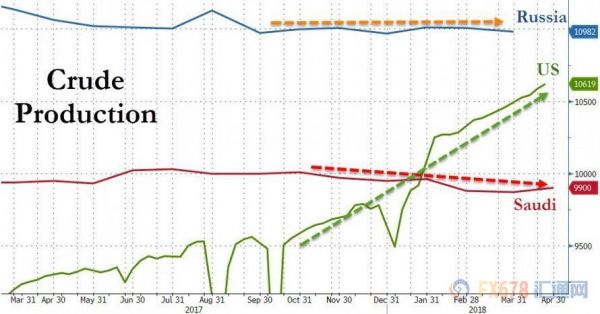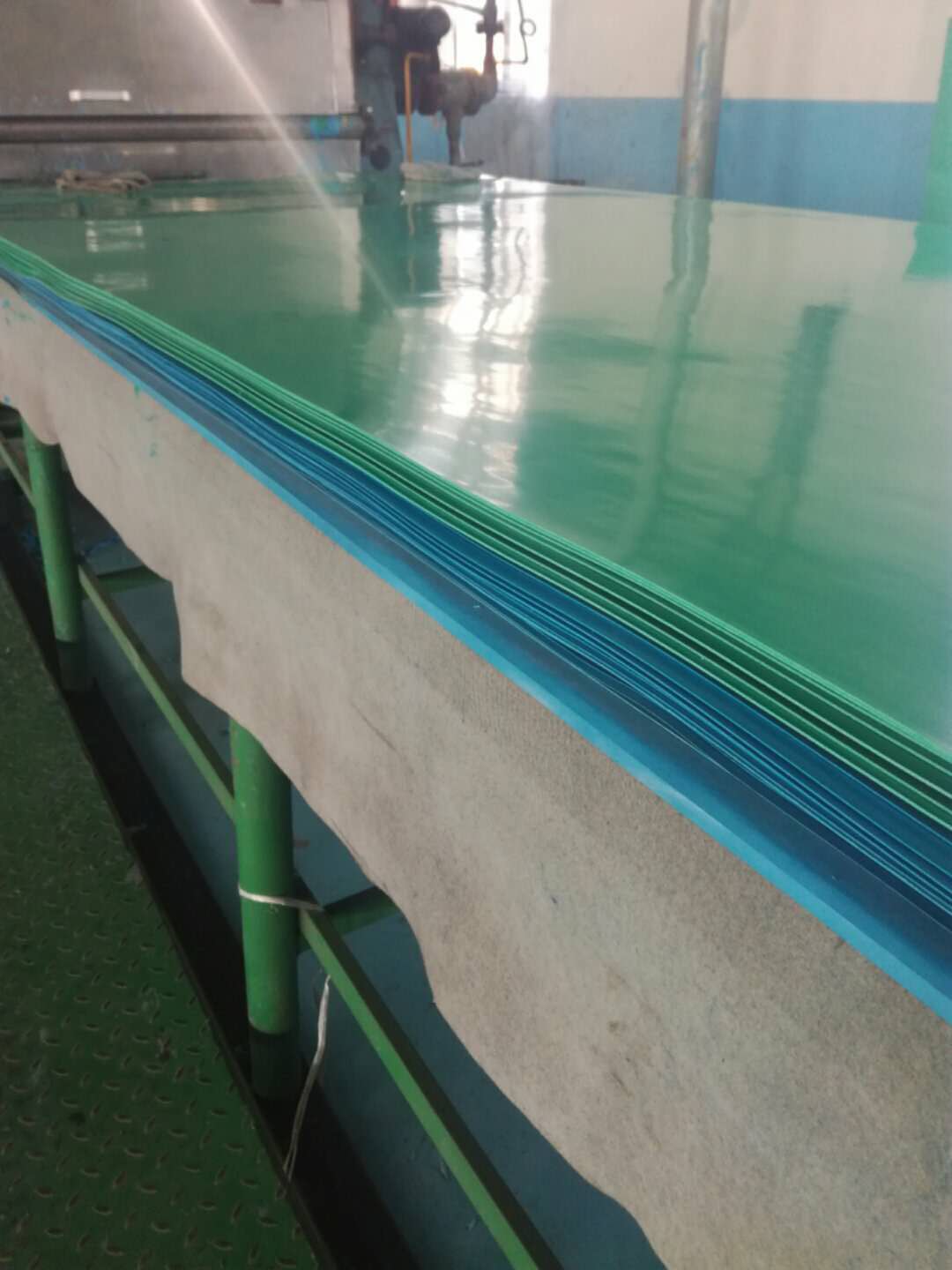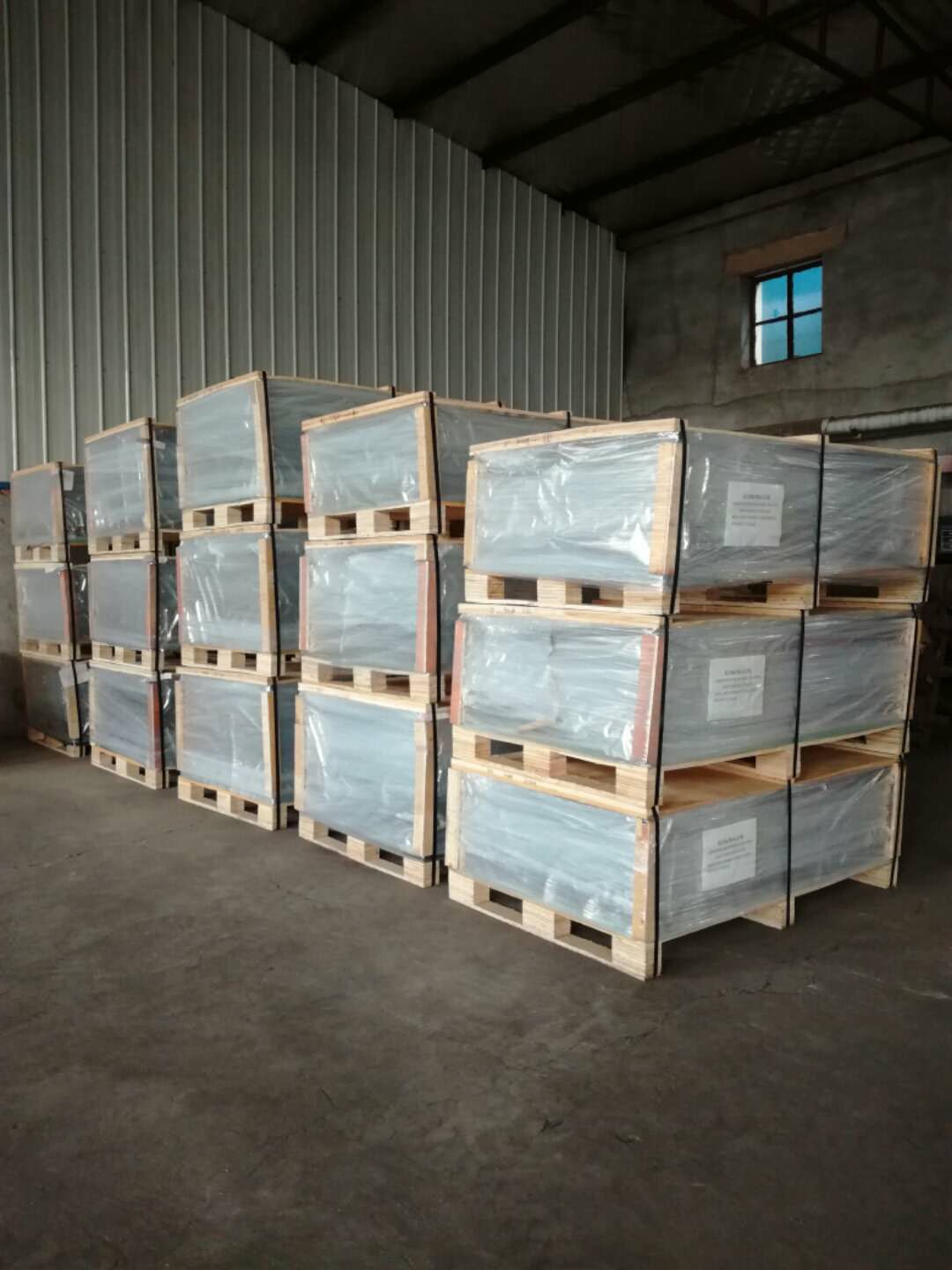How far can Russia's crude oil output go beyond the quota reduction agreement for two consecutive months?
According to data from the Russian Ministry of Energy, Russian oil production remained at an 11-month high in April this year, unchanged from March, but for the second consecutive month, it was higher than the quota set by the OPEC production reduction agreement.
The chart below shows the crude oil production in Russia (blue line), the United States (green line) and Saudi Arabia (red line):

In April this year, Russian oil production reached 10.97 million barrels per day, which was the same as that in March, slightly higher than the quota set by the OPEC production reduction agreement.
According to the OPEC production reduction agreement, Russia vowed to cut its production from the October 2016 level by 300,000 barrels per day. In October 2016, Russian oil production reached 11.247 million barrels per day, the highest monthly output in the country in the past 30 years.
In April, the output of large oil companies increased, while the decline in production by small oil companies offset this increase. As Russia's largest oil company, Rosneft's oil production in April rose 0.1% from the previous month. Gazprom Neft's oil production in April rose 0.9% from the previous month. At the same time, the total output of small oil companies fell by 0.9%, offsetting the growth of large oil companies.
After three months of stable production, Russian crude oil production rose to 10.97 million barrels per day in March this year, the highest level since April 2017, due to the two major oil giants, Rosneft and Russian Luke ( Lukoil) increased production.
As part of the cut-off agreement with OPEC, Russia led non-OPEC oil producers to cut production to reduce oil inventories and boost oil prices. Experts and official data have long predicted that crude oil inventories in OECD countries are very close to or have reached their five-year average, which is the standard for OPEC to measure the success of a production reduction agreement.
Despite this, OPEC “leader†Saudi Arabia insists that there is still a lot of work to be done, and the production reduction agreement should be extended to the end of this year as planned. Russia is more cautious in its comments, although the country has repeatedly expressed its commitment to production cuts. In April, Russian Energy Minister Alexander Novak said that at the meeting in June this year, OPEC and its allies may discuss the "relaxation of production cuts" until the end of this year.
Russia’s oil exports to China have increased
While increasing production, Russia’s oil exports to China have also increased significantly. Since the beginning of this year, Russia has been rushing to deliver crude oil to China. In the first quarter of this year, pipeline oil production soared 43%.
Russia has been the largest crude oil supplier in China for 13 consecutive months. According to the latest data released by the General Administration of Customs on April 13, Russia delivered 5.79 million tons of crude oil to China in March, equivalent to 1.36 million barrels per day, much more than Saudi Arabia (109,000 barrels per day). In the first quarter of this year, Russian crude oil exports to China increased by 22% year-on-year, with an average daily volume of 1.34 million barrels.
WNY250 Non-Asbestos Jointing Sheet for Oil-Resistance
Description:WNY250 Non-Asbestos Jointing Sheet for Oil-Resistance is made of excellent aramid fiber with synthetic oil-resistance rubber and other chemical materials.After heating and mixture treatment.It is mainly for such media as water and vapor and applicable to sealing and heat-insulation used in the industries as machinery, automobiles, farm, machinery and petroleum.
Usage:applicable to gasket materials for the connection of air conditioning system with fuel,oil-based lubricant as the media.
TEMP:250℃(max)
PRESS:2.0MPa(max)
Dimension:1540x1520mm(recommend)
1540*1360mm 1540*1020mm
Thickness: 0.5~6.0mm
Technical data:
Density g/cm3 1.6~1.8
Tensile strength ≥Mpa 9
Compressibility ≥ % 12+/-5
Recovery ≥ % 45
Aging Coefficient 0.9
Stress Relaxation ≤% 45
Steam Sealing Tmax: 250 ℃ Pmax:4~5Mpa 30min no shock
Temperature Max.oC 250
Pressure Max. Mpa 2.0
Resistance to media Water, seawater, steam, fuel, gases, salt solutions


Wny250 Non-Asbestos Jointing Sheet For Oil-Resistance
Wny250 Non-Asbestos Jointing Sheet For Oil-Resistance,Non Asbestos Rubber Sheets,non asbestos joint sheet,Non Asbdestos Jointing Gasket Sheets
HEBEI HENGDA SEALING MATERIALS CO.,LTD. , https://www.hengdasealing.com